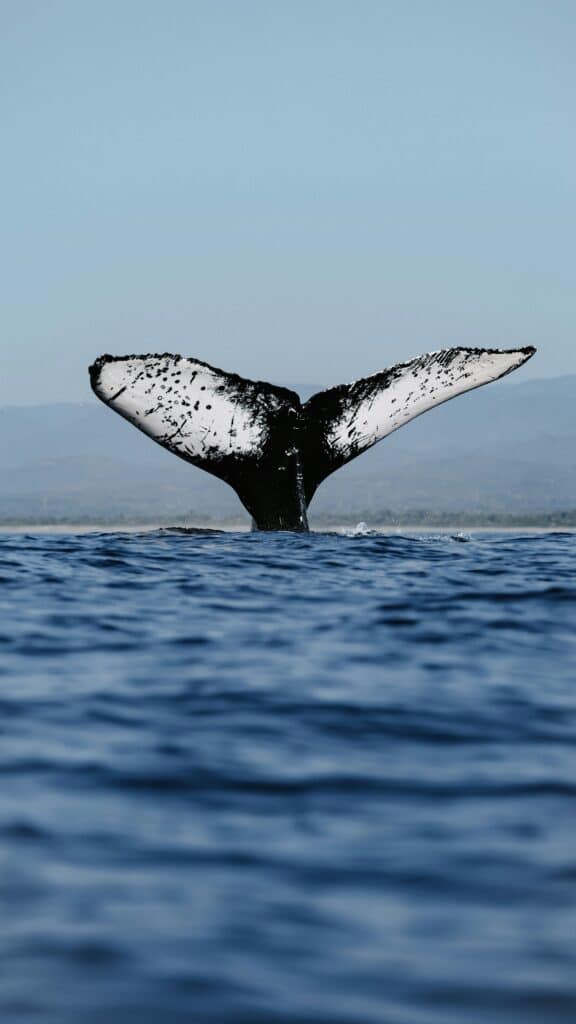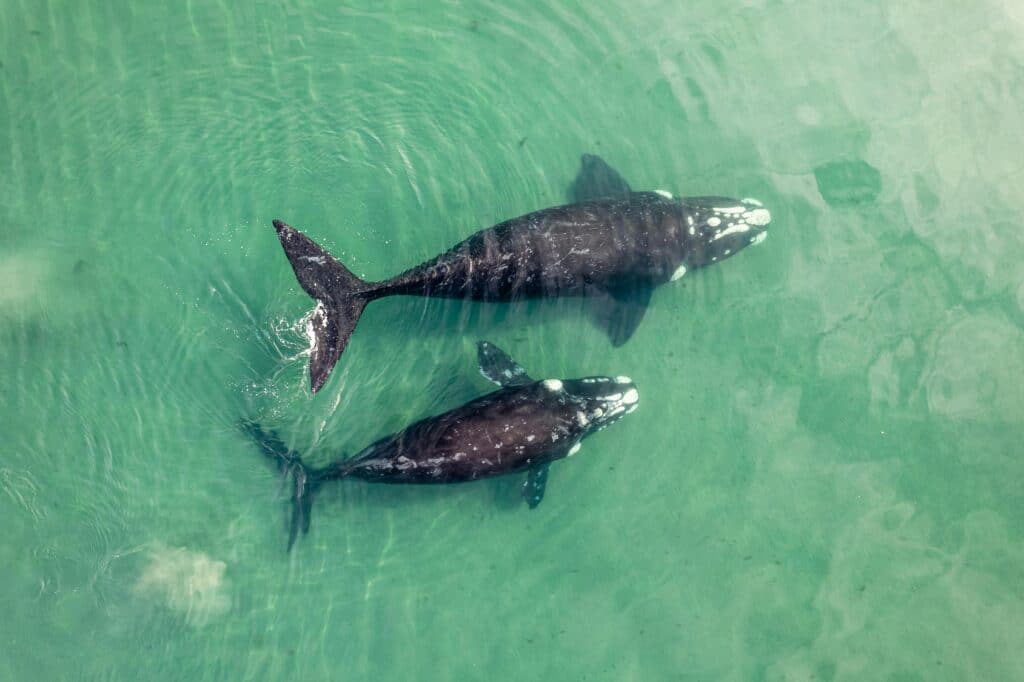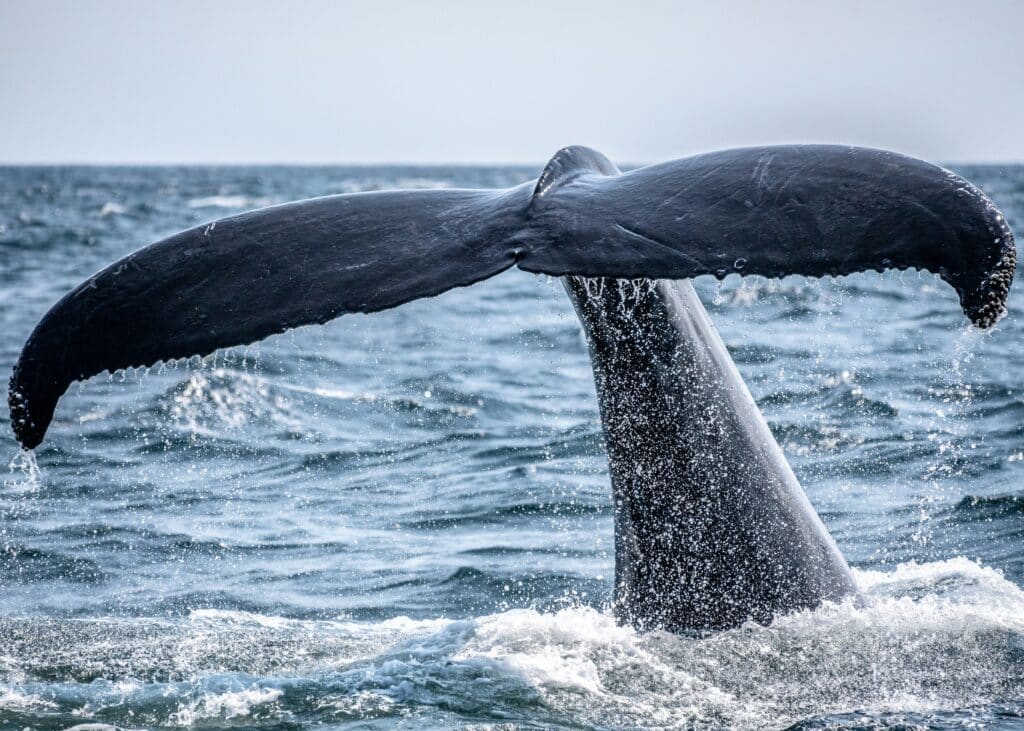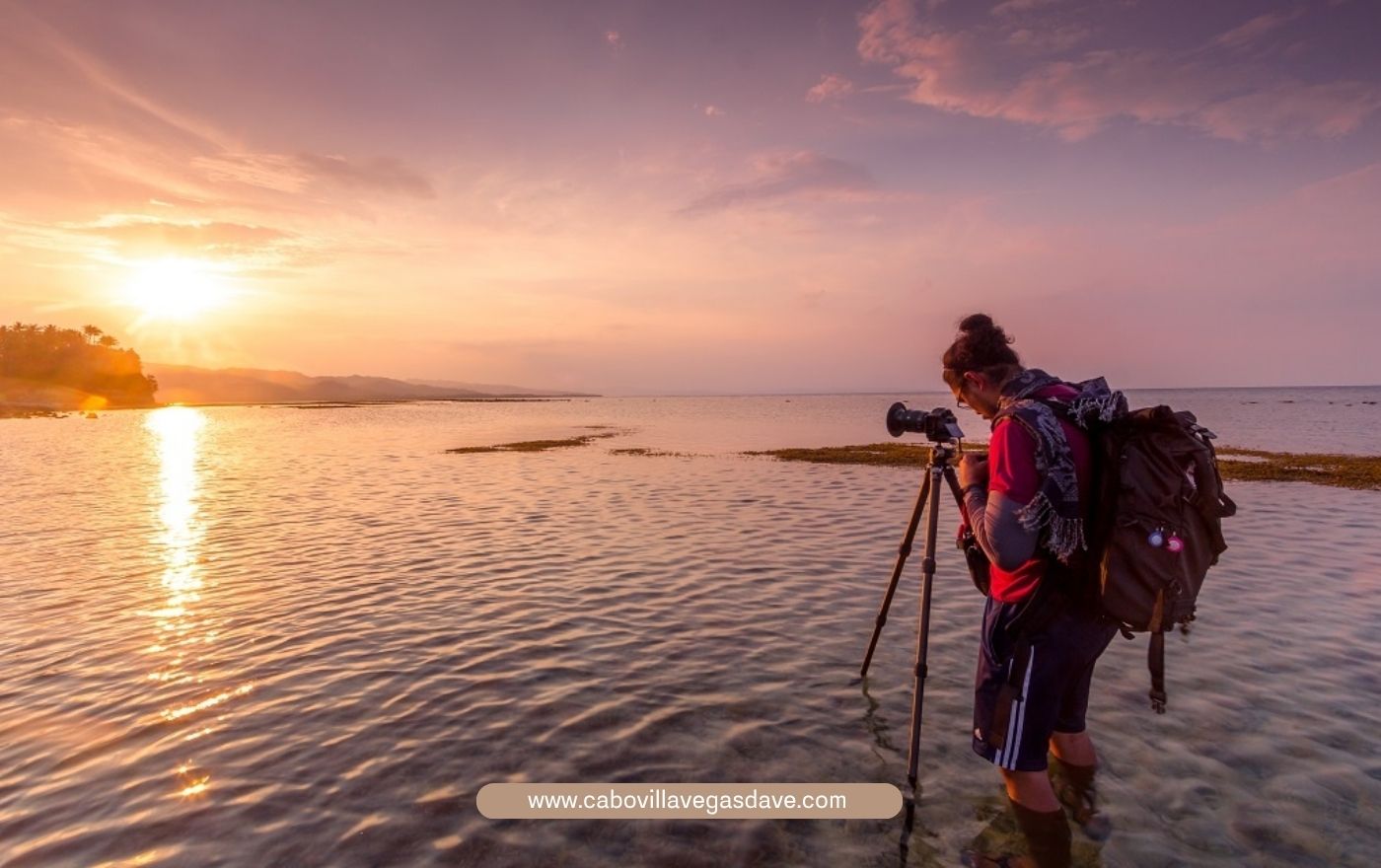Cabo San Lucas is a top spot for whale watching, drawing nature enthusiasts from across the globe. Its stunning coastline and rich marine life provide exceptional opportunities to observe majestic whales in their natural habitat.
Learn about different whale species, the best times to see them, and popular viewing spots. Get ready for unforgettable sightings with Cabo Adventures on a sunset whale-watching cruise!
Why Cabo is a Popular Destination for Whale Watching?
Cabo San Lucas, on the Baja California Peninsula, is renowned for whale watching thanks to its rich marine life and beautiful coast. The area’s warm waters create a perfect environment for migrating humpback and gray whales, offering travelers remarkable whale sightings during the designated whale-watching season.
The area’s commitment to responsible tourism and ocean conservation, supported by SEMARNAT regulations, ensures that visitors partake in ethical and eco-friendly whale watching experiences. This enhances Cabo’s status as a leading choice for wildlife tourism.
From December to April, thousands of whales come to these warm waters, presenting a unique opportunity for enthusiasts to observe the spectacular acrobatics of humpback whales or the gentle presence of gray whales against the picturesque backdrop of the Pacific Ocean.
Numerous local tour operators provide a variety of experiences, from intimate boat excursions to larger eco-tours, catering to diverse preferences and budgets. The region possesses a rich ecosystem, home to many marine species, emphasizing the ecological importance of the area.

Types of Whales Found in Cabo
Cabo San Lucas is home to various whale species, with humpback and gray whales being the most frequently observed during the whale-watching season. These amazing marine mammals display fascinating behaviors during whale-watching tours, such as breaching, tail-slapping, and vocalizations.
Each encounter presents a distinctive experience for wildlife enthusiasts.
Common Species and Behaviors
Among the common species of whales in Cabo San Lucas, humpback and gray whales exhibit behaviors that attract marine biologists, much like Jacques Cousteau, who engaged in the study of whale behavior.
These incredible creatures have unique social behaviors, enhancing their appeal. Humpback whales are known for their acrobatic displays, including breaching and slapping the water with their fins, while gray whales display a more subdued demeanor during migrations.
Both species make extraordinary journeys, with humpbacks traveling thousands of miles from cold feeding areas to warm breeding grounds, and gray whales migrating from the Arctic to the lagoons of Baja California.
Their interactions with other marine life, such as dolphins and seabirds, enrich the vibrant ecosystem, making observational studies exciting and valuable for researchers and eco-tourists following guides to the best activities.

Best Time to See Whales in Cabo
The best time to witness whale migration in Cabo San Lucas occurs during whale season, spanning December to April. This season attracts visitors seeking to engage in this unique experience.
Humpback and gray whales migrate from the Arctic to the warmer waters of the Pacific Ocean and the Sea of Cortez, offering numerous opportunities for memorable whale sightings.
Peak Season for Whale Watching
The prime season for whale watching is from late January to mid-March. During this period, whales are particularly active, providing the best chances for sightings.
Humpback whales perform amazing acrobatics during this time. Boat tours and environmentally respectful trips gain popularity as operators create unforgettable experiences, enabling visitors to observe these majestic creatures up close while learning about their behavior and habitat.
Many people travel to see these magnificent mammals, making early reservations for sunset cruises and guided tours essential for an unforgettable adventure.
Where to Go for Whale Watching in Cabo
Los Cabos offers several great spots for whale watching, with numerous companies providing customized experiences designed to enhance the likelihood of observing these majestic marine mammals.
Some top spots include El Arco, Santa Maria Beach, and Lover’s Beach. The distinctive topography and nutrient-rich waters effectively attract migrating whales.
Top Spots for Whale Sightings
Premier locations for whale sightings in Cabo San Lucas include the beautiful lagoons and waters surrounding iconic landmarks, where travelers can participate in whale watching tours designed for optimal viewing experiences.
These tours accommodate a range of preferences, from intimate small-group outings to larger, family-friendly excursions. The prime period for observing these magnificent creatures typically spans from December to April, aligning with their migration season. Noteworthy locations like the Sea of Cortez and striking El Arco provide breathtaking backdrops that enhance the experience.
Visitors frequently report sightings of humpback and gray whales, along with the excitement of being in a vibrant marine environment inhabited by dolphins and sea lions. Tour guides offer valuable insights into whale behavior and conservation efforts, ensuring the experience is both educational and exhilarating.

Whale Watching Tours and Excursions
Cabo offers diverse whale-watching tours and excursions designed to accommodate various preferences and budgets. Options include tours that respect the environment provided by reputable companies like Cabo Expeditions, which prioritize sustainable practices and the conservation of ocean ecosystems.
Options for Guided Tours and Private Charters
Travelers in Cabo have several options for whale watching tours, including guided boat excursions on luxury catamarans and family-friendly outings for all ages.
For a more personalized adventure, consider private charters, offering exclusive access to smaller groups. Guided tours, typically conducted by experienced guides, provide insightful commentary and foster camaraderie among guests, making them ideal for those who appreciate social interaction while observing the majestic gray and humpback whales.
Whether choosing a shared journey or an intimate escape, both options promise unforgettable memories while witnessing the breathtaking beauty of marine life in their natural habitat.
Whale Watching from Our Luxury Villas
Guests residing in our luxury villas, including Villa Vegas Dave 3, which features breathtaking ocean and marina views, can partake in a distinctive whale-watching experience directly from their private terrace.
This location offers a unique view during whale season.
Unique Experiences and Amenities for Guests
Enjoy the thrill of whale watching right from your private terrace, making your stay truly unforgettable. Our luxury villas are thoughtfully designed for exceptional comfort and elegance while promoting whale protection and ocean conservation.
Each villa features spacious viewing decks for breathtaking panoramic vistas, ideal for observing passing humpback whales. Guests can join guided eco-tours led by marine biologists, who provide valuable insights into whale behavior and the significance of preserving habitats.
Sustainable practices are integrated into our operations, using solar energy and sourcing organic local produce for dining. Our commitment to green practices enhances the guest experience and helps protect marine ecosystems, making each stay a meaningful step toward a healthier ocean. Watch this video to experience Live Whale Watching at Villa Vegas Dave 3.
Tips for a Memorable Whale Watching Experience
Follow these essential tips for an unforgettable whale watching experience in Cabo San Lucas, emphasizing responsible and ethical tourism practices crucial for protecting marine mammals. This approach facilitates respectful interactions with marine life, aligned with guidelines from Cabo Expeditions.
What to Bring and How to Prepare
When preparing for a whale watching experience, consider items like binoculars, eco-friendly gear, a camera, and a travel guide to learn about local whale species and their migration.
Dress in layers for fluctuating temperatures, ensuring comfort throughout the outing. A wide-brimmed hat and sunglasses are advisable for sun protection, while an additional jacket may be prudent for cooler breezes. Bring a reusable water bottle to stay hydrated and snacks for sustained energy. Opting for biodegradable sunscreen safeguards your skin while protecting the marine environment and aligns with whale watching regulations.
Learn about local whale species and their migration patterns to enhance your experience and increase the likelihood of spotting these magnificent creatures, especially during peak whale season.



